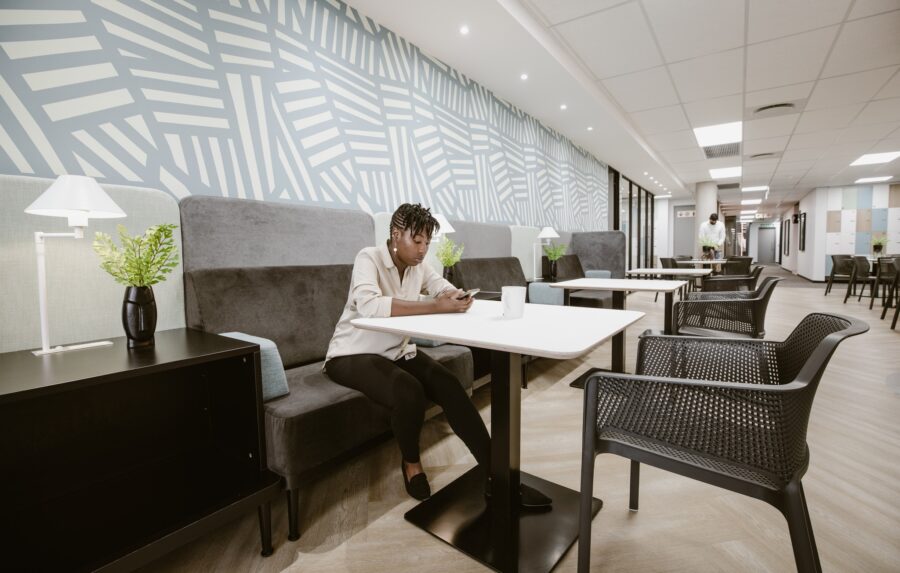Giant Leap: 5 Reasons Your Hybrid Work Model isn’t Working
Is the new hybrid working plan actually working? “That’s what a lot of South African companies are now asking, as they step back and review their progress toward a new hybrid workplace,” said Linda Trim, Director at Giant Leap, one of South Africa’s largest workplace design consultancies.
“More and more businesses have at least a portion of employees who spend some of their time working in the office and some time working remotely. But it’s not always clear whether they’ve arrived at the “right” hybrid model—the version that boosts individual productivity, team collaboration and organisational innovation.”
Here are six warning signs leaders should look out for:
1. Managers are out of sync with their teams
“If managers are spending a lot more time in the office than their teams are—or a lot less—you have a problem,” Trim noted.
For one thing, if your boss spends most of the time in the office, even though the official line is that you’re welcome to spend two days a week at home…well, it’s hard not to feel uneasy about working remotely.
But it can be even worse if the boss is in the office less than the rest of the team. When you have to be in the office four days a week, but the boss is only there for two, it feels unfair—even when that discrepancy is directly related to the nature of your work and responsibilities.
2. People miss the pandemic
“Remember when we were all working remotely?” is a question that should ring an instant alarm. “When you hear your employees waxing nostalgic for the days of full-time remote work, you know the return to the office has been less than a clear win.” Trim warned.
“Dig into what people are missing about full time remote work and then look for ways to reduce workplace frustrations, whether that means creating interruption-free hours, or increasing benefits such as tastier snacks.”
3. Work hours are expanding
Maybe some executives still see 12-hour workdays as a badge of honor, but for a lot of employees, that just leads to burnout and resentment.
Said Trim: “And that’s one risk of a hybrid schedule, since days crammed full of video calls and meetings often push other work (like email, planning and report writing) into the small hours.
If your data shows email and messaging creeping past business hours, start by looking at your managers’ habits—again, looking at a group, not at individual users—to see if this is a top-down problem. When the boss is emailing at 9 p.m., it can be hard for rank-and-file workers to unplug and unwind.
4. It’s all business
Many business leaders worry about what hybrid work means for their company culture, because they think of culture as something that happens when people are gathered around a conference table or heading out for drinks after work.
“The truth is that hybrid teams can build relationships and trust both in person and remotely—but only if there’s room for play and exploration as well as for the job at hand,” said Trim.
When on-site days are so packed or if the volume of online communications is so overwhelming that there’s no room to waste on a little personal news, it’s a sign that you haven’t left any space for bonding.
Leave the first or last minutes of every meeting for informal conversation; call remote colleagues on their birthdays; set up an always-on webcam in the break room so that off-site workers can drop in for a spontaneous visit with their on-site colleagues.
5. Your late adopters relapse
One positive effect of Covid? Even the most steadfast late adopters—the people who refused to use Google Docs, Slack, Microsoft Teams or really anything other than email—finally had to learn to use online collaboration tools, many of which are just as useful in the office as they are when working remotely.
“Now that they are back in the office, at least part of the time, are they relapsing by reducing their use of digital collaboration tools? If so, it’s a sign that you haven’t found an effective approach to distributed and hybrid teams.
“If part of your team has reverted to the physical exchange of paper, or at best whiteboards in the office, the hybrid team isn’t going to be as productive as you’d like.
“The hybrid workplace, in other words, isn’t a free pass to go backward. Nor is it a free pass to throw out everything that worked before.
“It’s an opportunity to take what we learned during the pandemic and build something new, something better,” Trim concluded.
Discover the best ways to reconfigure your office and working life. Contact Giant Leap
You might also like...
-
Why Ergonomic, Durable Seating Matters in Industrial & Lab Workspaces | Hambanati Office

In the world of high-performance workspaces – where precision matters and long hours are the norm – the right chair is more than just a ...
-
The Office Isn’t What It Used to Be: How South African Businesses Can Adapt to the New Hybrid Workplace

Gone are the days of the lively office buzz—those spontaneous chats, the murmur of creative collaboration, and the hum of energy that once ...
-
Maximize Space, Boost Productivity: The Power of Cluster Desks

Creating a productive, functional office space without feeling cramped can be challenging, especially when dealing with limited square footage. Cluster desks offer a smart solution ...
-
Woodlam: Reintroducing Luxury Furniture For The Office

Woodlam has been on a mission to re-introduce luxury and designer furniture to home office workspaces, helping elevate the way you feel while you ...























